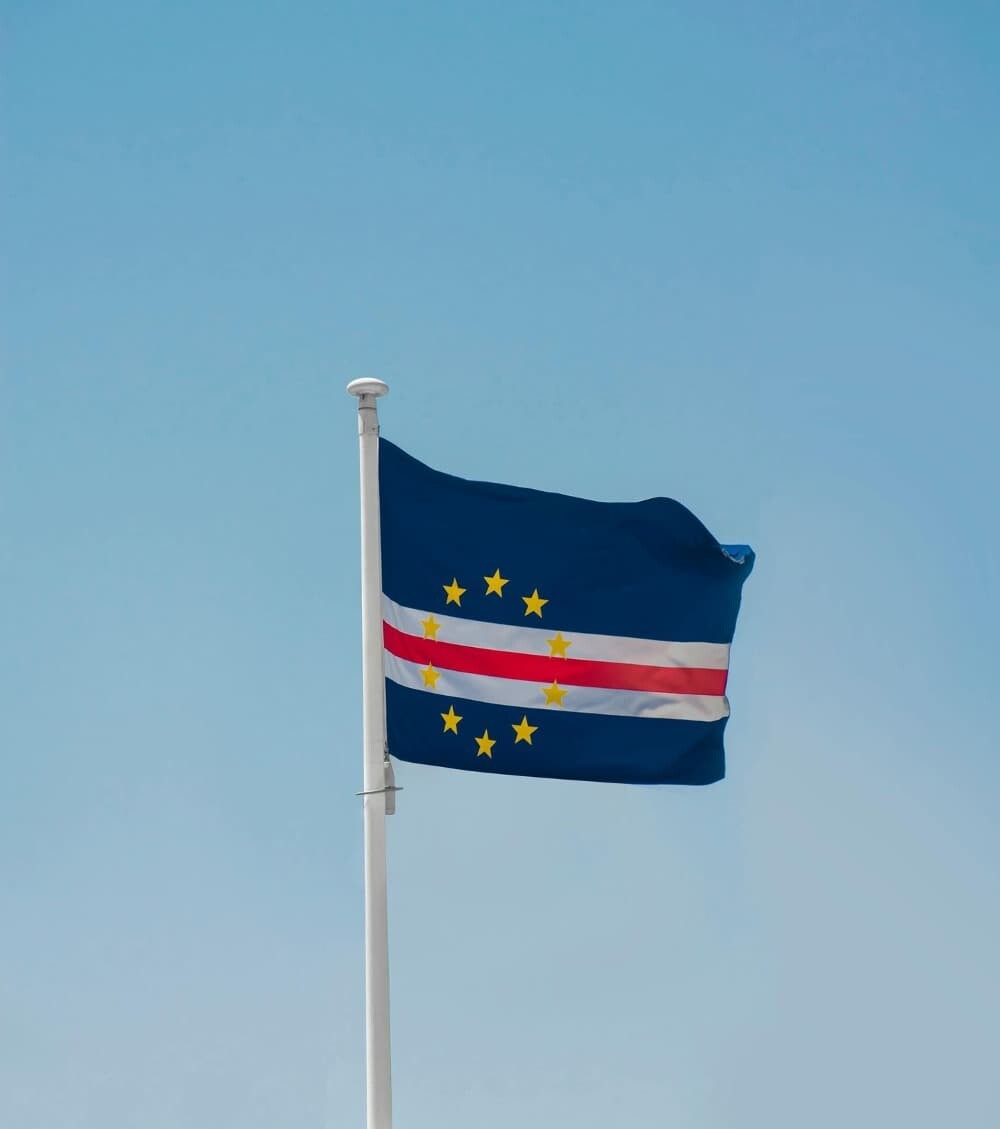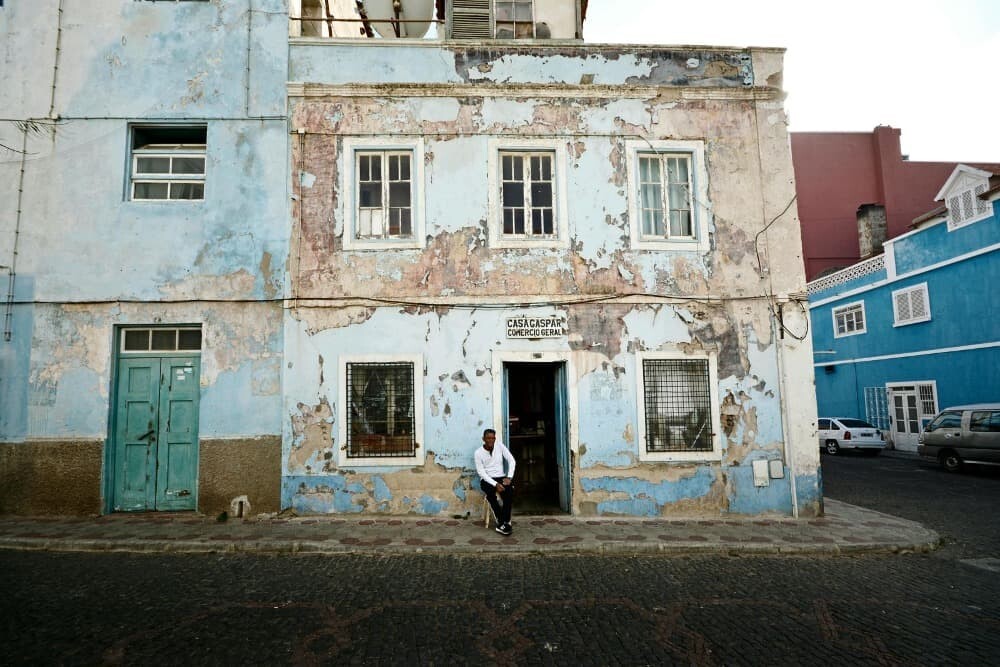Another destination offered by Cooperating Volunteers for your volunteer experience is Cape Verde, also known as the Republic of Cape Verde. Here, you can participate in the loggerhead turtle protection program, which we have discussed previously in another blog post.
This project is located in Boa Vista, where you will participate in various activities such as:
- Daily census of turtle tracks and nests on nesting beaches.
- Control and monitoring of nesting beaches.
- Rescue of disoriented females.
- Protection of breeding females and their nests.
- Tagging and data collection of breeding females.
- Monitoring the productivity of the beaches:
- Tagging and monitoring natural nests.
- Excavation of natural nests.
- Analysis of predation and mortality rates of eggs and hatchlings.
- Improving productivity through hatchery programs.
Today, we will talk about some must-see places if you choose Cape Verde for this experience so you can enjoy before, during, and after your trip.

This island country consists of an archipelago of ten islands in the Atlantic Ocean, located 600 km off the Senegalese coast, with its capital in Praia, on the island of Santiago.
Although it is one of the smallest countries in Africa, Cape Verde has a lot to offer.
Discovered and colonized by the Portuguese in the 15th century, Cape Verde gained independence from Portugal on July 5, 1975. Therefore, Cape Verdean culture is closely linked to Portuguese culture, not only in the official language (Portuguese) but also in its people, food, and traditions.
The islands are divided into two groups: the Windward Islands (to the north) and the Leeward Islands (to the south). Each island has its own unique landscape and characteristics, from sandy beaches to volcanic mountains. The climate is dry tropical, with little rain and moderate temperatures year-round. The population is approximately 550,000 inhabitants.
Here are some must-see places:
SANTIAGO ISLAND
It is the largest and most populated island in the Cape Verde archipelago and part of the Leeward Islands group. It was the first to be inhabited and has everything the other islands have: paradisiacal beaches, desert plains, green valleys, and mountains.
This island is home to Praia, the capital and largest city, as well as the main port of the country.
As the first inhabited island, it has a rich cultural heritage with African, Portuguese, and Brazilian influences.
Some tourist attractions include Tarrafal Beach, the historic Forte Real de São Filipe in Cidade Velha (a UNESCO World Heritage colonial city), and numerous hiking trails in its mountains and valleys. The highest point is Pico da Antónia, reaching 1,392 meters above sea level.
The island is also known for its music and dance, especially the musical genre known as “batuku”.

SAL ISLAND
In contrast to Santiago, it is one of the smallest inhabited islands but also one of the most popular. It belongs to the Windward Islands group and is named after the salt mines that were one of its main sources of income in the past.
This island is relatively flat, covering an area of about 216 km2. Its highest point is Monte Grande, with an altitude of 406 meters. The climate conditions make it ideal for sunbathing, enjoying the beaches, or engaging in water sports like windsurfing or kitesurfing. The beaches of Santa Maria and Ponta Preta are the most famous for these activities.
Santa Maria is the main city on the island and a major tourist center with numerous hotels, restaurants, and bars.
Also worth visiting are the Pedra de Lume salt flats, an ancient volcanic crater now a salt flat where visitors can float in its saline waters, similar to the Dead Sea.
Another iconic spot is Buracona, known for the ‘Blue Eye,’ a natural pool that creates an impressive visual effect when the sun is at the right angle.
Sal hosts Cape Verde’s main international airport, making it easily accessible and popular as a tourist destination.
BOA VISTA ISLAND
This island is part of the Windward Islands group. It is the third-largest island in Cape Verde, with an area of approximately 620 km2. The island is known for its predominantly flat landscape, with extensive white sand beaches and Sahara-like dunes. Its highest point is Monte Estância, reaching 387 meters.
The capital of Boa Vista is Sal Rei, a small port city on the northwest coast. Sal Rei is the main economic and cultural center of the island, with a growing tourism infrastructure.
Key tourist spots include:
- Praia de Chaves, a long white sand beach perfect for sunbathing and swimming.
- Deserto de Viana, a dune area offering spectacular landscapes and opportunities for quad biking and other adventure sports.
- Praia de Santa Mónica, considered one of the best beaches in Cape Verde, known for its natural beauty and tranquility.
- Praia de Atalanta, also known as Shipwreck Beach, due to the remains of the Spanish ship “Cabo Santa Maria” that wrecked there in 1968.
- Boa Vista is also a crucial nesting site for turtles, which is why we conduct our protection and conservation program there.
SÃO VICENTE ISLAND
This island is also part of the Windward Islands group. It has an area of approximately 227 km2 and is known for its mountainous and arid landscape. The island is dominated by Monte Verde, its highest point at 774 meters. Unlike other islands in the archipelago, São Vicente has sparser vegetation.
Mindelo is the capital of São Vicente and the second-largest city in Cape Verde. It is the main cultural and economic center of the island, known for its vibrant nightlife, music, and festivals. Notable events include the Mindelo Carnival, one of the most famous in Africa, and the Baía das Gatas Festival, held annually on the beach, attracting artists and visitors from around the world. It is known as the cradle of Cape Verdean music, especially the genre “morna,” popularized by the singer Cesária Évora, a native of Mindelo.
Highlights include Laginha Beach, ideal for swimming and relaxing, Baía das Gatas, famous for its calm and clear waters, perfect for swimming and snorkeling, and Monte Verde, offering panoramic views of the island and a popular hiking destination.
The island also has the Cesária Évora International Airport, facilitating access to domestic and international flights.
SANTO ANTAO ISLAND
Santo Antão is one of the largest and most spectacular islands in the Cape Verde archipelago and also part of the Windward Islands.
It is the second-largest island in Cape Verde, with an area of approximately 779 km2. The island is known for its rugged mountainous terrain with deep valleys and ravines. The highest point is Topo da Coroa, reaching 1,979 meters.
The island has a varied microclimate, with a greener and more fertile northern part due to the trade winds, and a more arid southern part. This makes it ideal for agriculture, especially for growing sugar cane, coffee, bananas, and other tropical products.
The capital of Santo Antão is Ribeira Grande, located on the northern coast. Another important city is Porto Novo, on the southern coast, which is the main port of the island.
Hiking is highly recommended on this island, with its routes through impressive and varied landscapes. Popular routes include the hike from Cova to Paul and the old path from Ribeira Grande to Cruzinha.
Other attractions include the Ribeira do Paul, a valley known for its lush vegetation and sugar cane plantations, and the Cova Crater, an ancient volcanic crater turned fertile agricultural valley.
Santo Antão has no airport, so access is mainly by ferry from the island of São Vicente.
Although the northern part of the island is green and fertile, deforestation and soil erosion are significant issues affecting agriculture and the daily lives of the inhabitants.
FOGO ISLAND
Fogo Island is one of the most emblematic islands, known for its active volcano and landscape. It is part of the Leeward Islands group.
With an area of approximately 476 km2, the island is dominated by the Pico do Fogo volcano, the highest point in Cape Verde at 2,829 meters. The island is of volcanic origin, characterized by rugged landscapes and fertile soils.
The volcano is a major attraction on the island. The last significant eruption occurred in 2014-2015, causing the evacuation of residents and the destruction of some villages. Tourists can climb Pico do Fogo and explore the caldera, offering stunning views and a unique experience.
São Filipe is the capital of the island and the fourth-largest city in Cape Verde. It is a historic city with cobbled streets and colonial buildings and is an important cultural and economic center of the island, with attractions such as the Igreja Nossa Senhora da Conceição and the municipal market.
Hiking and climbing are recommended for adventurers, with numerous routes offering breathtaking views.
Another highlight is Cha das Caldeiras, a village located within the volcano’s caldera, where visitors can learn about life in a volcanic community and taste local wine produced in the region. The constant volcanic activity presents challenges for residents, who must be prepared for possible evacuations and property loss. However, the community’s resilience and the volcano’s tourist appeal help boost the local economy.
Fogo Island has an airport, São Filipe Airport, which facilitates access to domestic flights. The port of Vale de Cavaleiros in São Filipe connects the island to the rest of the archipelago via ferry services.
These are just some of the islands and tourist attractions you can enjoy if you choose Cape Verde for your experience.
We look forward to welcoming you!




